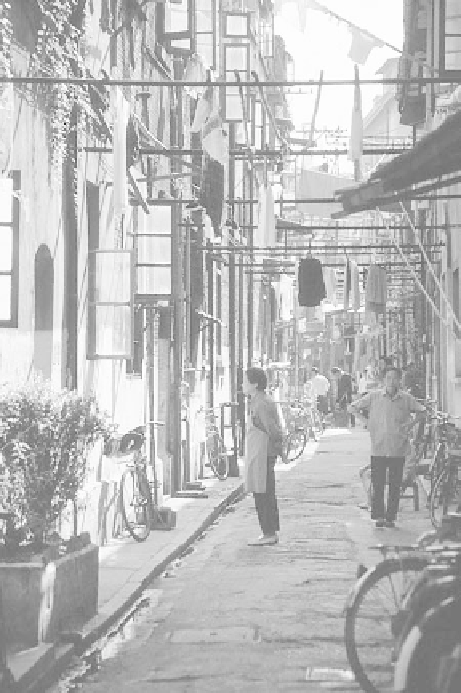Geography Reference
In-Depth Information
reform and is in the midst of an economic boom.
One advantage Shanghai has is that it is of suffi-
cient size to become the “Dragon Head” of the
Huangpu and Yangzi River commercial ribbon. It is
already a key commercial center with proximity to
both the north and south coasts. It has the largest
pool of experts in science, technology , and manage-
ment, as well as skilled workers.
These advantages led to the 1990 decisions to
promote both Shanghai on the west bank of the
Huangpu River and Pudong on the east side of the
river. Pudong was to be developed and opened to
foreign banks, finance, and insurance companies,
department stores, and supermarkets. Since 1992,
Shanghai' s growth rate has exceeded that of all China!
While the Shanghai economy is mainly indus-
trial, the service sector is becoming increasingly im-
portant. The tertiary sector is designed to serve the
entire nation. Within the industrial sector, there are
six pillars of industry: automobiles, iron and steel,
petrochemicals, power equipment, telecommunica-
tions, and electrical equipment. The Jinqiao Export
Processing Zone in Pudong has played an essential
role in this development.
The high cost of land and labor in Shanghai has
forced it into high-tech and high-value industry .
Other kinds of industry are gravitating to the Nan-
jing and Hangzhou areas, where a new freeway is
expected to enhance their competitiveness. A new
Ring Road, six-lane elevated highways, and subway
lines now facilitate spatial interaction in the web of
industry and commerce. Pudong International Air-
port opened in 1999, and a maglev train connects
the new airport with a downtown metro stop.
Housing and services are of great concern.
Shanghai has five times the density of Beijing with
12,000 persons per square kilometer. Many resi-
dents lived in
lilongs,
densely packed neighbor-
hoods inhabited by several generations of families
and friends (Figure 11-16). Now the
lilongs
are al-
most gone—demolished for urban renewal. Many
people are demoralized about what is happening to
their neighborhoods. T To be forced into isolated
apartments far away from their social and cultural
space is devastating, particularly for older people.
A new housing plan is based on the Singapore
model, whereby the residents own their own hous-
ing. An owner must occupy the dwelling for five
years before renting or selling it. New houses and
Figure 11-16
This is a traditional housing area in Shanghai known as a
lilong
.
These apartments do not have modern facilities. Bathrooms are in a
building down the street. Laundry is hung outside for lack of space
inside. Most of Shanghai' s
lilongs
have been demolished in the wake
of modernization. As neighborhood and extended family groups are
forced to move to the city outskirts, they are separated and their
social networks are fractured.
Photo courtesy of B. A. Weightman.
apartments are rising everywhere, especially in the
former market gardening suburbs.
Shanghai is one of the greatest urban renewal
stories in history . Nearly 17 billion dollars in for-
eign investment has transformed the once drab
skyline to one of glittering skyscrapers and neon.
But all is not perfect. There is a vast influx of “float-
ing” and “temporary” populations. These people
live in slums and do not have equal access to edu-
cation or services. There is a growing income dis-
parity between rich and poor.


















Search WWH ::

Custom Search